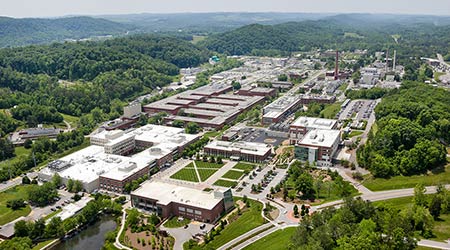« Return to FMDAA entries

Oak Ridge (Tenn.) National Laboratory
CATEGORY: Sustainability
Overview
The Facilities Management Division at the Oak Ridge National Laboratory (ORNL) is proud of its achievements in sustainability. We manage 5.2 million square feet at the U.S. Department of Energy’s (DOE) largest science and energy laboratory, and have made significant progress in reducing water and energy use as well as implementing enduring green purchasing and recycling programs.
What was the outcome of the process, i.e., the achievement?
Among our many accomplishments, we:
- Achieved a 35.7 percent reduction in building energy intensity while increasing building energy use by only a 4.7 percent against our 2001 baseline. This was achieved while adding nearly 2 million square feet of new facilities space (63 percent growth).
- Upgraded 15 facilities to the DOE standard of High Performance and Sustainable Building, representing nearly 262,500 square feet.
- Reduced water usage intensity to 132 gallons per square feet, representing a 25 percent reduction from 2007.
- Installed 59 advanced utility meters in the past year, bringing the total to 650 connected devices installed since 2012 as part of a Central Energy Data System. This provides crucial information for benchmarking and developing monthly building-level energy data reports for facility managers and engineers. We have installed “dashboards” in individual facilities to raise employee awareness of energy use.
- Diverted, through our recycling efforts, 3,422 metric tons of waste over the past five years that otherwise would have gone to landfill disposal. We also diverted 19,100 metric tons of construction waste during the same time frame.
- Replaced thousands of standard lights with LEDs throughout the campus.
- Received in 2015 a Leadership award from the DOE, recognizing ORNL as a champion in alternative fuel use in the Southeast and among national labs.
- Standardized the procurement of janitorial supplies to environmentally-friendly products. Janitorial closets are equipped with chemical dispensing systems that dispense the correct amount needed for cleaning. Plastic spray bottles are labeled and refilled with the chemicals which reduces the amount of waste going to the landfill. The cleaning chemicals used have a low health and safety risk.
What problem or opportunity started the process that produced the achievement?
ORNL traces its history back to the Manhattan Project during World War II and, as facility managers, we faced the challenges of an aging infrastructure. In the early 2000s, we embarked on a $750 million modernization project. We decided to embrace sustainability for three reasons. First, a significant amount of research at the Lab was focused on sustainability and we seized the opportunity to make our facilities a test-bed for researchers. Second, sustainability and setting an example for East Tennessee and the entire Southeast was increasingly part of our federal charter. Finally, we saw that sustainability makes good business sense which pays lasting dividends and reduces overall costs to U.S. taxpayers.
Why did you choose a particular course of action?
With our modernization project that today has seen two million square feet of growth, we chose LEED certification as our template (Leadership in Energy and Environmental Design) on new buildings. At the same time, we renovated a significant number of facilities and applied LEED standards. In fact, our first facility renovation earned a LEED Existing Building Gold certification, while others followed using DOE’s High Performance and Sustainable Building guidance.
Many of our actions have been selected because of our goal to be a test-bed for research. Our central energy data system is an example. Research into heating, ventilation, air-conditioning systems, building envelope improvements and other initiatives are also driving our choices as we move forward.
Finally, we conducted extensive benchmarking with industry and other national labs.
What challenges did you face along the way, and how did you overcome them?
Our most pressing challenge was identifying and focusing on opportunities to conserve energy and water without negatively impacting the energy and water resources necessary for mission-critical research. We overcame this by specifically identifying high-intensity, mission-specific buildings and energy end-uses. Our energy and water conservation projects involved research operations managers to ensure that research continuity was not negatively impacted by energy and water conservation efforts.
We’re continuing on our journey. We’re currently planning to convert six existing buildings to meet DOE’s High Performance and Sustainability guidance. Breathing new life into existing buildings allows us to avoid new construction at our fast-growing national laboratory, ultimately saving federal resources. We’re continuing to upgrade lighting to LEDs. We’re evaluating HVAC system set points and sequences of operation for functionality and suitability with respect to current space use. New, lower supply air volume set points enable the reduction and, in many cases, elimination of reheat demand. And, we’re continuing to make recycling easier for our staff through improved labeling of containers and increasing availability.
Sustainability is not a buzzword in ORNL’s Facilities Management Division. It’s truly a way of life.
In-house Participants
Bryce Hudey, Energy Efficiency and Sustainability Program
Additional Information

» View Oak Ridge Chart (PDF)
↑ Back to top









